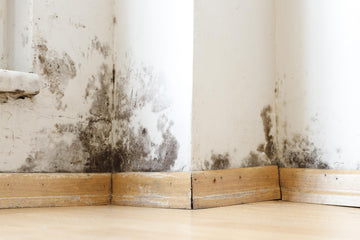Mycotoxin Exposure
The program includes
This test is collected by: Urine
Detects 11 common mycotoxins in the body to assess whether chronic toxin accumulation is caused by daily intake of grains, nuts, coffee or long-term exposure to humid spaces such as air conditioners, bathrooms, and wooden cabinets
|Inspection Services
Detects 11 common mycotoxins, including aflatoxin, ochratoxin, gibberellin and hidden toxin sources in the home
Corresponding to home mold hotspots: storage rooms, air conditioners, bathrooms, sofas, food cabinets and other often overlooked sources
Can identify whether the source of the toxin is dietary (fermentation, grains, dry goods) or environmental (moisture, mold)
|Digital Services
Digital Report
Integrate toxin types, detoxification strategies and environmental modification suggestions
Consultant explanation (need to be purchased with integration solution)
About the Test
Who is suitable for "Mycotoxin Residue" testing?
Mycotoxin residues
Detect 11 common mycotoxins in the body to assess whether chronic toxin accumulation is caused by daily intake of grains, nuts, coffee or long-term exposure to humid spaces such as air conditioners, bathrooms, and wooden cabinets.
Common Myths
Have you ever felt this way?


Test items and specifications
Service Process
How we work
Consultation and assessment of suitability
If you are not sure which tests to choose, we recommend that you make an appointment for [30-minute consultation | NT$1,500] to have a consultant help you clarify your needs and choices.
*Subsequent purchase of testing solutions can be deducted NT$500
Service Binding and Purchase Testing
*When placing an order, you can directly make an appointment for the time and location of blood collection. After payment, you can go at the agreed time without making another appointment.
Log in to the member center and fill in the questionnaire
-
Lifestyle: Take inventory of diet, exercise, stress and sleep habits
-
Chronic Inflammation Risk: Evaluating Common Inflammatory Indicators and Physical Signs
Health data collection:
-
Blood samples: Go to a designated cooperative location to complete the blood draw → View blood draw locations across Taiwan
-
Urine/feces specimens: The sampling kit will be delivered to your designated address. Please bring it back to the blood drawer on the day of blood draw.
Things to note before drawing blood
-
Please fast for at least 8 hours . Drink a 300cc glass of boiled water in the morning to help with blood draw comfort.
-
Avoid staying up late, strenuous exercise and drinking the day before to avoid affecting the results
-
If you have regular medication, a cold, or feel unwell, please inform our customer service or consultant in advance through the official LINE
Health data generation (approximately 10–14 working days)
-
After the sample is sent, the health data and corresponding strategy will be completed within 10-14 working days (depending on the test items)
-
Once the report is completed, you will be notified via LINE and Email , and an appointment with a consultant will be provided.
- The report can be viewed in the "Member Center" or by clicking on "My Report" on the official LINE app.
One-on-one interpretation by consultant (60 minutes)
-
Sorting out detection priorities and risk trends
-
Develop supplement and lifestyle adjustment strategies
-
Create a follow-up plan to ensure you take action
Do it and you will start getting better
Start a personalized optimization plan. This is not just a test, but a health upgrade plan tailored for you. You will know clearly what to supplement, what to do, and what to change . It is accurate and wasteless.
Consultation and assessment of suitability
If you are not sure which tests to choose, we recommend that you make an appointment for [30-minute consultation | NT$1,500] to have a consultant help you clarify your needs and choices.
*Subsequent purchase of testing solutions can be deducted NT$500
Service Binding and Purchase Testing
*When placing an order, you can directly make an appointment for the time and location of blood collection. After payment, you can go at the agreed time without making another appointment.
Log in to the member center and fill in the questionnaire
-
Lifestyle: Take inventory of diet, exercise, stress and sleep habits
-
Chronic Inflammation Risk: Evaluating Common Inflammatory Indicators and Physical Signs
Health data collection:
-
Blood samples: Go to a designated cooperative location to complete the blood draw → View blood draw locations across Taiwan
-
Urine/feces specimens: The sampling kit will be delivered to your designated address. Please bring it back to the blood drawer on the day of blood draw.
Things to note before drawing blood
-
Please fast for at least 8 hours . Drink a 300cc glass of boiled water in the morning to help with blood draw comfort.
-
Avoid staying up late, strenuous exercise and drinking the day before to avoid affecting the results
-
If you have regular medication, a cold, or feel unwell, please inform our customer service or consultant in advance through the official LINE
Health data generation (approximately 10–14 working days)
-
After the sample is sent, the health data and corresponding strategy will be completed within 10-14 working days (depending on the test items)
-
Once the report is completed, you will be notified via LINE and Email , and an appointment with a consultant will be provided.
- The report can be viewed in the "Member Center" or by clicking on "My Report" on the official LINE app.
One-on-one interpretation by consultant (60 minutes)
-
Sorting out detection priorities and risk trends
-
Develop supplement and lifestyle adjustment strategies
-
Create a follow-up plan to ensure you take action
Do it and you will start getting better
Start a personalized optimization plan. This is not just a test, but a health upgrade plan tailored for you. You will know clearly what to supplement, what to do, and what to change . It is accurate and wasteless.
Frequently asked questions
Is the 30-minute consultation included?
Is consultant data analysis included in the multiple-choice test?
How often is it appropriate to do it?










